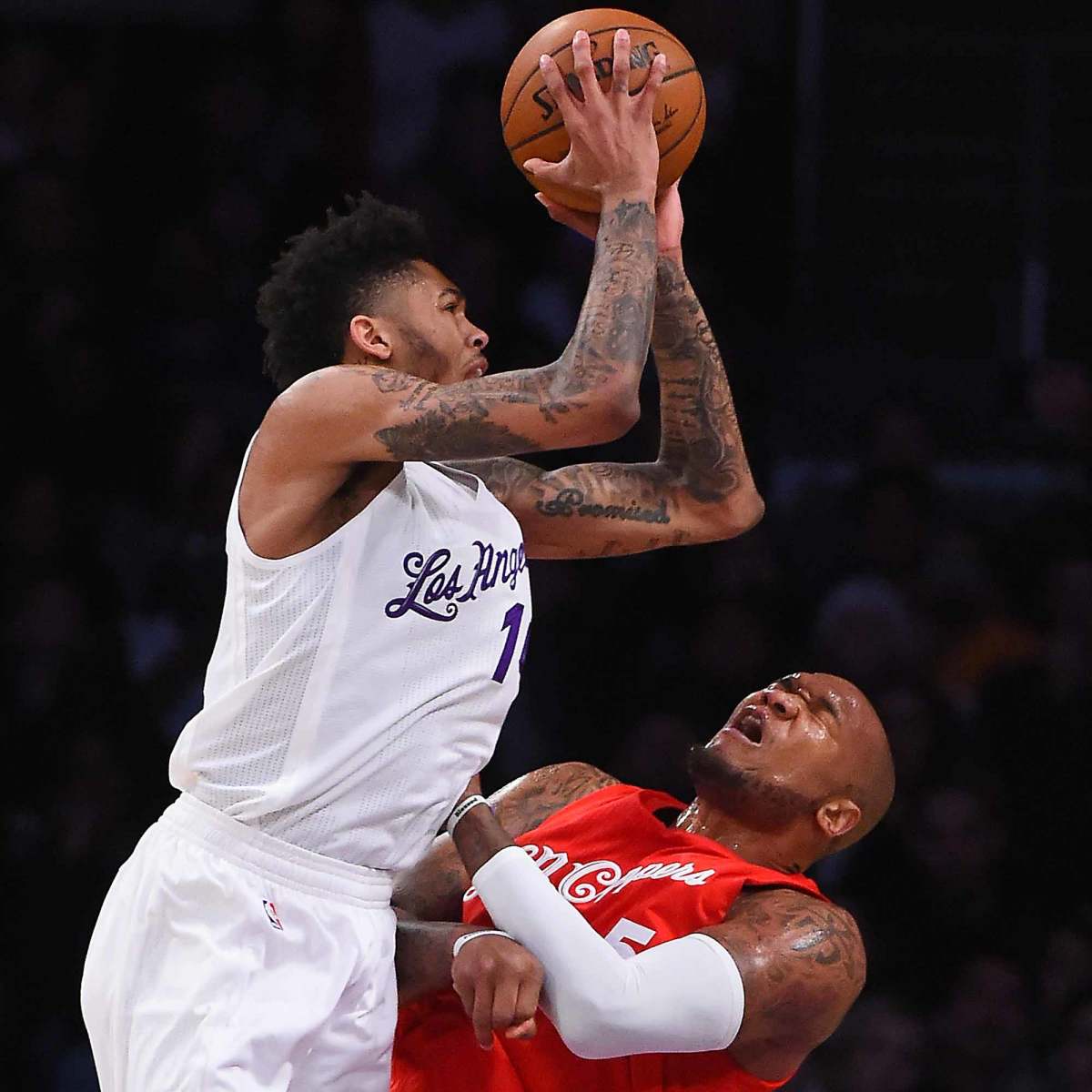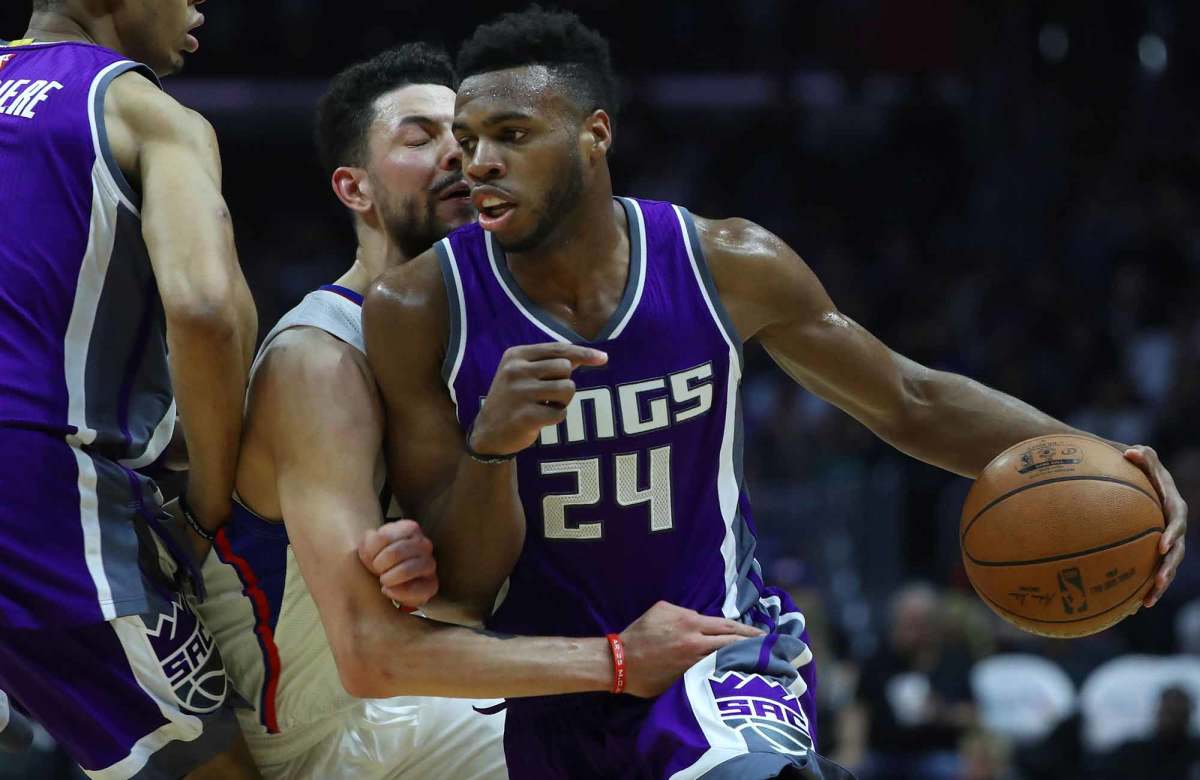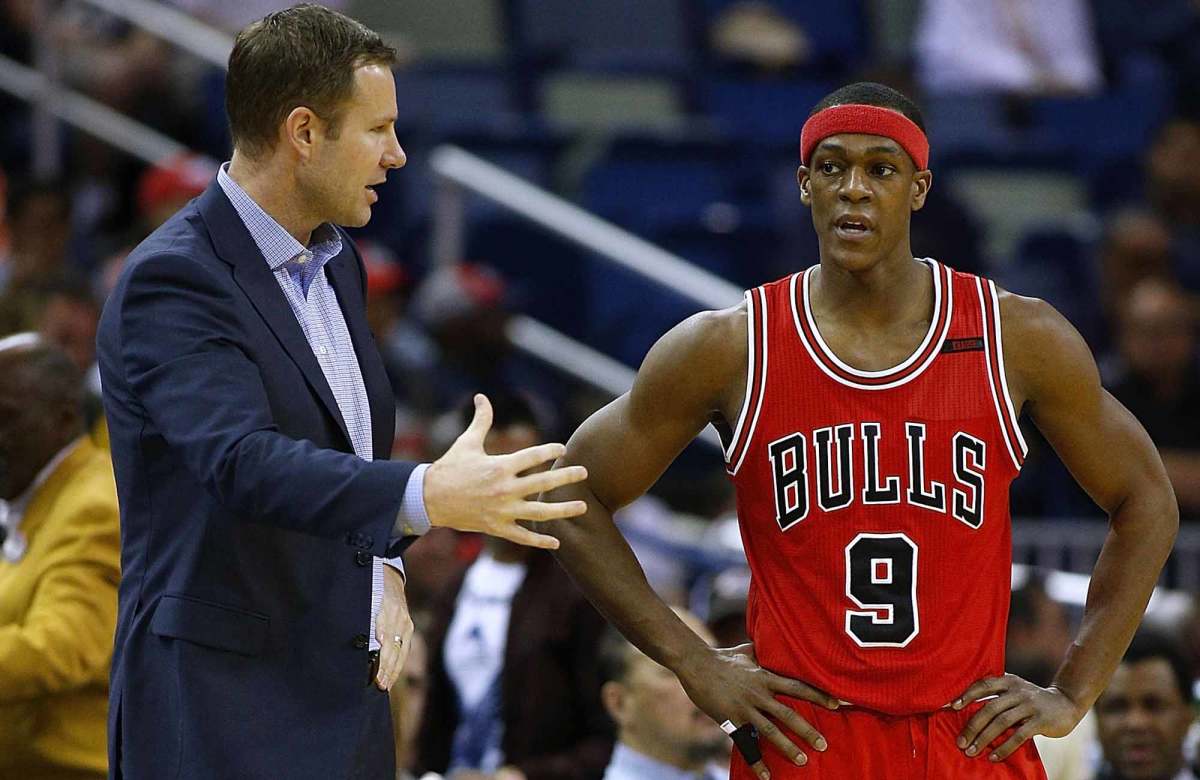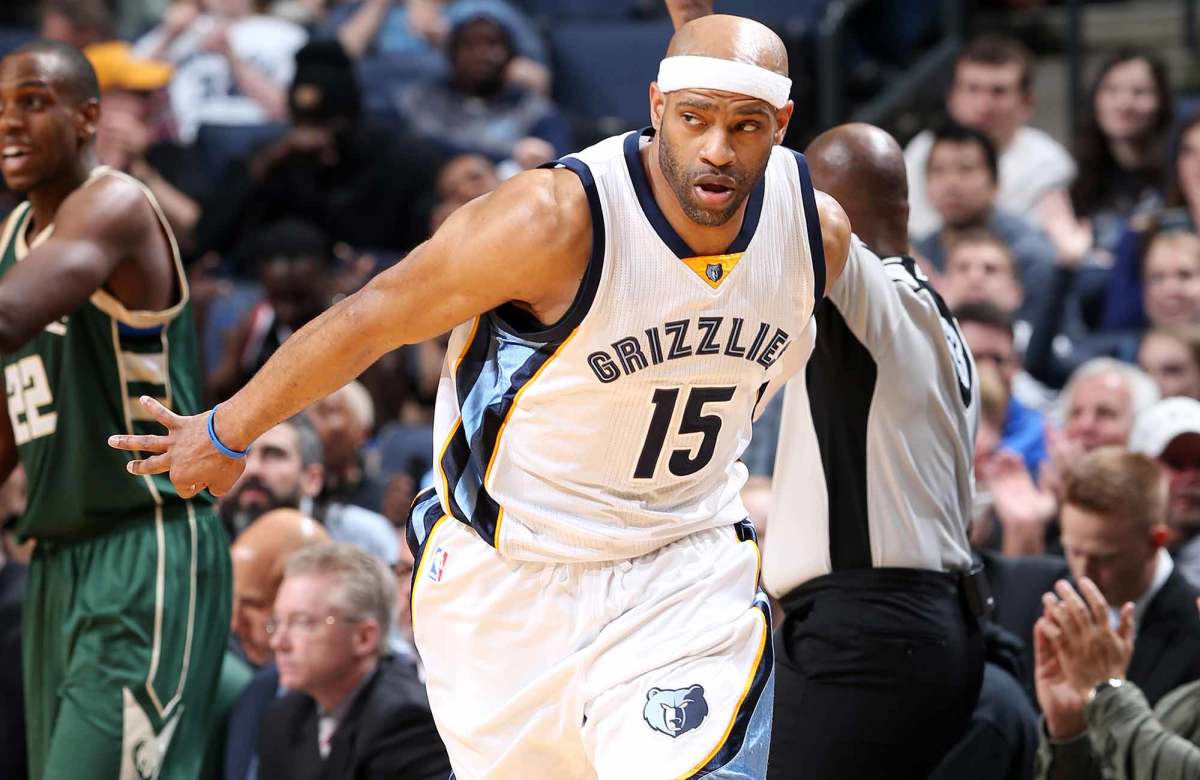Made-Up Awards For The 2016-17 NBA Season

With the end of the regular season comes an auspicious occasion: the chance, per long-standing internet practice, to hand out entirely made-up awards. Below are a handful of honors designed to highlight what the NBA’s standard array fails to recognize.
Without further ado...
Gunner of the Year: Russell Westbrook, Thunder
When faced with an opening, Westbrook’s mantra for the season rings true: Why not? Why not drive headlong into the lane, brushing off defenders along the way and forcing rotation? Why not average almost four shots per 36 minutes more than any other player in the league? Why not pull up when defenders are constantly on their heels for fear of your speed? Why not go and go and go when no one in the league has the stamina to consistently guard you? Westbrook is gunning for statistical glory this season, though hardly in excess; the Thunder honestly need every point, assist, and rebound from Westbrook they can get. Reasonable people can disagree as to whether that kind of complete investment is really the healthiest dynamic for a team, but as currently constructed, Oklahoma City could likely do no better. Volume can be a virtue.

Most Charged: Marreese Speights, Clippers
Reactions on the Clipper bench are generally subdued. A throwback Blake Griffin dunk or a particularly violent DeAndre Jordan block can get teammates jumping and dancing, but most anything short of that usually returns muted support and applause. The greatest of exceptions is a drawn charge from Marreese Speights—L.A.’s shot-happy reserve center. On every charge the Clippers celebrate with unfettered enthusiasm, and in games where Speights draws more than one, they respond to each successive charge as if they were heat-check threes.
The evolution has subtly made Speights more viable. Even at 6'10", Speights makes for only an incidental rim protector; be tall enough and hang around the basket and some shots will just find their way to your hand. The timing of the charge just comes more naturally, as it allows Speights to shuffle into position and play off the fact that he really doesn’t have the vertical nor the timing to really assert his verticality. Instead, Speights slides over and braces himself. He takes a charge per 36 minutes, a stark frequency that allowed him to snag the title away from charge-drawing regular Ersan Ilyasova.
Best High-Usage Lineup: Golden State Warriors
Golden State’s starting five: Stephen Curry, Kevin Durant, Draymond Green, Klay Thompson, and Zaza Pachulia (+23.1 per 100 possessions)
Who else? Golden State’s default starters very quietly outperformed last year’s group by a whopping 10 points per 100 possessions. Almost all of that margin came on offense; the Warriors have the league’s highest efficiency on balance, a number anchored in part by this especially prolific combination. No matter how the dynamic between Durant and Curry seemed or felt, their most common lineup together flooded opponents with scoring that so very few could match. And hell, correct a few of the Pachulia possessions every game that don’t go quite as intended and the margins could be even bigger.
NBA Mock Draft 3.0: Tourney Shakes Up Board
Worst High-Usage Lineup: Detroit Pistons
Detroit’s original starting lineup of Andre Drummond, Kentavious Caldwell-Pope, Reggie Jackson, Tobias Harris, and Marcus Morris (-12.3 points per 100 possessions)
It is bewildering that a Pistons team with personnel so theoretically capable (and run by Stan Van Gundy) would be so consistently dreadful on defense. Swap out Harris for Jon Leuer (as the Pistons themselves did mid-season) and the results are nearly identical: a defense so porous as to allow its opponents on average to outperform the best offense in the league. Exchanges are botched with shocking regularity. Buffers are given to effective shooters and lanes surrendered that shouldn’t be. Van Gundy’s best defenses played a more conservative style that looked to slowly constrict opponents rather than apply frenetic pressure. Detroit keeps with that, only opponents slip easily from their grasp—so easily, in fact, that they out-shoot the Warriors (57.2% effective field goal percentage) against the Pistons’ starting five.

Most Promising Reclamation Project: Buddy Hield, Kings
The book on Hield—cobbled together over his college rise, Summer League showing, and first five months in the league—suggested his game wasn’t likely to be served by a heightened creative role. His handle, while serviceable, didn’t look quite sharp enough to break down NBA defenders. HIeld is neither particularly tall nor all that athletic by positional standards, which makes it difficult to shake his way into open shots. It was almost exclusively Hield’s jumper that got him into the league and it would be his jumper that would let him stay there.
That’s still largely true. Yet since being traded to the Kings back in February, Hield has had far more opportunity to flex his creative muscle. Sacramento has no more superstar around which to build its offense. The void leaves players like Hield with more touches and more room, all for a team that with a heavy, vested interest in seeing him succeed. As a result, Buddy feels like a Sooner again. His confidence (and success) coming off of curls has wedged open some driving lanes. Hield still has trouble working his way through multiple layers of defense off the dribble, but he has enough weird step-backs and dribble moves in his game that it’s all starting to work.
“Reclamation” may seem harsh for a rookie, but consider this: The value of the Pelicans’ No. 6 pick depreciated the moment they used it on Hield, and Hield’s value only depreciated from the start of the season to the moment of his trade. He wasn’t a disaster in New Orleans, but Hield—who is already 23 years old—had done so little there in a relatively straightforward role that there was fair cause for worry. Things are, shockingly, looking up for him in Sacramento.
Medal for Marskmanship in Corner Three-Point Shooting: Klay Thompson, Warriors
The off-ball choreography that Golden State employs rarely allows for Thompson to stand totally still. He’s always adjusting; even when he’s not sprinting through curls as an option or a distraction, Thompson sneaks around to set screens or glides along the three-point line to tangle opposing defenses. Still, he finds himself working into the corner often—enough to take the second-most corner threes in the league (behind Houston’s Trevor Ariza) and make more of them than anyone else. Thompson has already taken 11 more corner threes this year than he did last (a solid bump for a volume of 165 total shots in 2015-16) in four fewer games. No matter what the Warriors run or who dictates the offense, Thompson’s presence and proficiency (43.8%) there make for great constants.

Most Generous: Rajon Rondo, Bulls
That Rondo earns this honor has more to say about the league than about him. With the way the game has evolved, the high-turnover, low-attempt big man has fallen out of the league almost entirely. Kendrick Perkins and Reggie Evans are no more. Andrew Bogut and Festus Ezeli weren’t healthy enough to make a run. That left the most turnover-prone point guards in the league to compete for the honor and none can really touch Rondo. Even in a season when Westbrook (444) James Harden (424) crushed the previous record (374) for total turnovers, Rondo still stakes his claim by turning the ball over so often while handling it so little. It’s not entirely his fault; a risky playmaker like Rondo offering in a cramped offense like Chicago’s is a recipe for disaster. But even when Rondo does get out into space, he turns the ball over on 30.4% of the transition possessions he uses, according to Synergy Sports. An almost religious aversion to shooting has fed one of the nastier turnover streaks in the league.
Most Deferential: Jason Terry, Bucks
For most of his career, the best way that Terry could contribute to a team was to shoot. Dallas made him a super-sub years ago based on this premise; playing big minutes as a reserve would allow JET more clear opportunities to fire away, free from the pecking order of the starters and the opponent’s best defenders. These days, Terry contributes as much through the shots he doesn’t take. Facilitation has become more of a priority for his Milwaukee tenure, to the point that Terry is averaging almost a third of the shots per minute he managed at his peak output. Roughly seven passes come through Terry’s hands for every time he shoots. His statistical company: Bigs who never actually touch the ball until it’s time to score. Tyson Chandler, Tristan Thompson, and Dewayne Dedmon are his peers in attempts now—a dramatic turn for a career scorer trying to fit Milwaukee’s needs.
Would You Build Around: Harden, Curry Or Russ?
Screener of the Year: Cody Zeller, Hornets
There’s good reason why Charlotte’s offense is at its absolute best when Zeller, a limited scorer in most regards with little in the way of ball skills, is on the floor: The man is a smart, relentless screener. Zeller can lay out a defender with a hard, direct hit if a play calls for it. Or, as is more often the case, he makes real contact before springing instantly into his roll:
Many of the NBA’s roll men will slip out of their screen just a touch early—enough for inconvenience the defender but never really pick them. Zeller gets the hit and launches into action without missing a beat, pushing off and changing direction in one fluid motion. It’s just the right mix of physical, punctual, and just so slightly illegal to get the most out of the pick-and-roll game.

The Dikembe Mutombo Commemorative Award for Achievement in Immortality: Vince Carter, Grizzlies
For all the amazing things Carter has done in his 18-year career, few are half as impressive as working as a solid role player at age 40. Only five other players in NBA history ever made it that far—the most recent being this award’s namesake. And he’s still dunking—if a bit more slowly than he used to. It takes some revving up for Old Man Vince to vault his way to the rim, but he’s throwing down between-the-legs jams and 360s at a time when it should be impossible. Hell, he’s playing NBA basketball at a time when it should be impossible, and filling a needed role for the Grizzlies however he can. For some players, longevity can seem like magic. There’s always been something supernatural in play with the way Carter flies, but his great secrets are far more ordinary: maintenance, diet, and on-court restraint.
Ranking The NBA's Seven Most Hopeless Teams
Most Flagrant: Markett Morris, Wizards and Matt Barnes, Warriors (tie)
Sometimes things happen exactly as they should. Two players who fancy themselves enforcers ended up in a deadlocked tie for the most flagrant fouls overall and the most total flagrant foul points. Just one more hard hit would have subjected either Morris or Barnes to an immediate suspension on those grounds. Both, as you might expect, proclaimed their innocence. Morris earned his sole Flagrant 2 foul of the season when he gave a swift, hard kick to Mason Plumlee’s…midsection:
[youtube:https://youtu.be/ldmmCCJGE70]
“I saw the video when I came back here, but I mean, he attacked the ball so hard,” Morris told the Washington Post. “His force coming down on the ball made me come up. That’s how it happened. I didn’t know I kicked him in the nuts.” Words likely to be etched into the base of his statue outside the Verizon Center.
Barnes, a national authority on the subject of flagrant fouls, thought his penalty for decking Brooklyn’s Sean Kilpatrick in mid-air was a bit harsh.
“I got a Flagrant 2, which wasn’t a Flagrant 2, but luckily we were able to keep our composure,” Barnes told the New York Post. “They were able to make a quick run after I got thrown out.”
Post Stalwart of the Year: Joel Embiid, 76ers
If the post game is dead, no one bothered to tell Embiid. The should-be Rookie of the Year—if only his knees permitted—gave the Sixers their best source of reliable offense by stationing himself on the block. Embiid loves to put opponents in the torture chamber; he sells every fake like a man reaching for YouTube immortality. When they don’t bite, he cycles through moves in search of one that might entice them. According to Synergy Sports, Embiid uses more possessions in the post (including shots, turnovers, drawn fouls, and passes) than any other player in the league. He’s not exactly the most efficient (even relative to the low ceiling of post scoring in general), but Embiid’s stabilizing influence for an offense that needed him—along with Philadelphia’s clear lack of proper support and alternatives—excused the cost.
